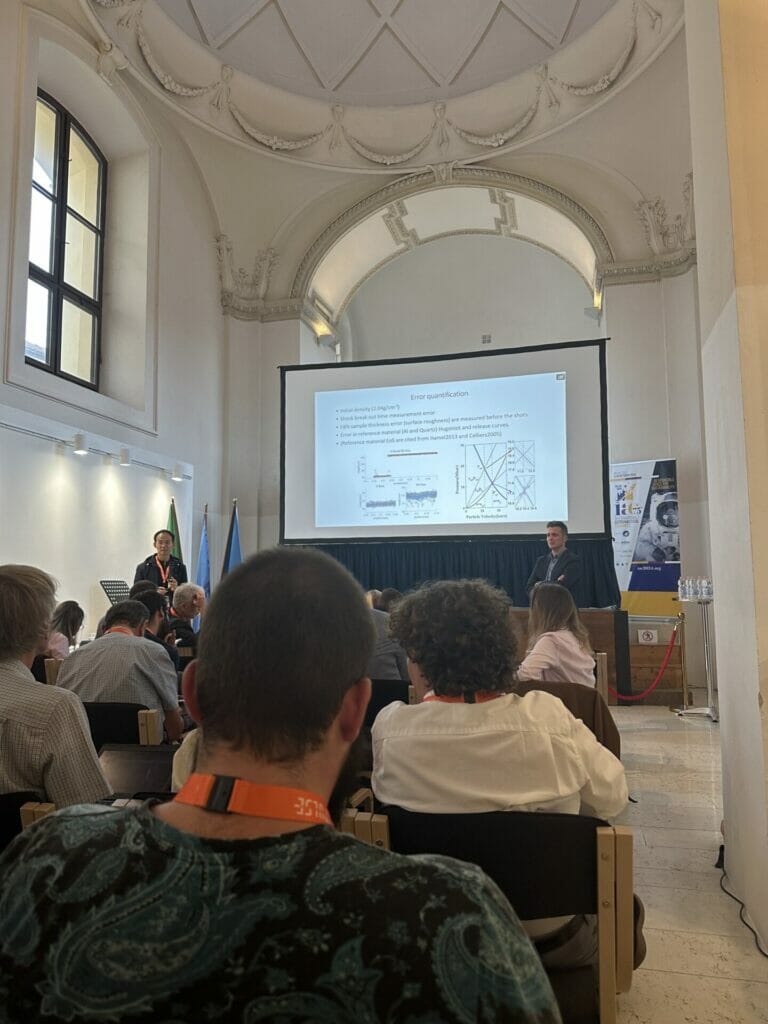Hydrogen-Boron (pB11) fusion had a sort of coming-out party in Prague the first week of October. Over 100 researchers gathered Oct 2-Oct 6 at the 3rd International Workshop on Proton-Boron Fusion to discuss the latest results in the rapidly moving field and plans for the next round of experiments. Not only did the number of participants double from the event last year, but the presence of fusion industry corporate giants like General Atomics signified the “mainstreaming” of the pB11 fusion field. This is a big change from even a few years ago, when the use of this fuel to achieve practical fusion (pioneered by LPPFusion, among others) was widely dismissed by government funding agencies. We expect the new credibility of pB11 fusion coming out of the conference to help LPPFusion’s fundraising efforts and to make collaboration with other researchers easier. (See the second news item).
Driving much of the excitement at the conference was an ongoing series of results with laser-driven pB11 fusion that far exceeded expectations based on theory and simulations. With deuterium and deuterium-tritium fuels, fusion yield has almost always fallen short of predictions from simulations, so having fusion that are tens or hundreds of times more than simulations with hydrogen-boron fuel is a big change for the better.
The laser results have continued to improve, leading to a series of records. The latest, announced at the conference was from the Institute of Physics, of the Chinese Academy of Sciences in Beijing. Dr. Yihang Zhang presented new experiments that led to a PB11 fusion yield of 7 mJ for a laser input to a solid target of 270 J. While in itself this result was comparable to those already achieved by the HB11 start-up in Australia, Dr. Zhang explained that the reaction resulted from a laser-produce proton beam, containing only 7 times more energy input to the target than the fusion output. While the energy input to the entire laser device is several million times more than the energy in proton beam, the record efficiency of the proton beam in producing fusion reactions is remarkable and at least 10 times larger than theoretical predictions.
Dr. Zhang attributed part of the good results to the foam nature of the boron/plastic target. The tiny threads of material between the foam voids concentrate the electric fields and may reaccelerate the protons after they have been slowed down by collisions with other nuclei in the foam. This process can extend the time that the protons are energetic enough to fuse with the boron nuclei in the foam.

The 3rd Proton-Boron Fusion Workshop at the ornate Italian Cultural Institute Hall in Prague
At the conference, a new organization promoting the development of proton-boron fusion was publicized. The organization, PROBONO, which LPPFusion has joined, is funded by the European Union. Unfortunately, the name, which is legal jargon for “for free”, is apt as the amount of the funding is at the moment very small and is limited to travel and administrative costs, not research. However, the existence of the organization just as an official network will make setting up collaborations among pB11 fusion researchers much easier.
